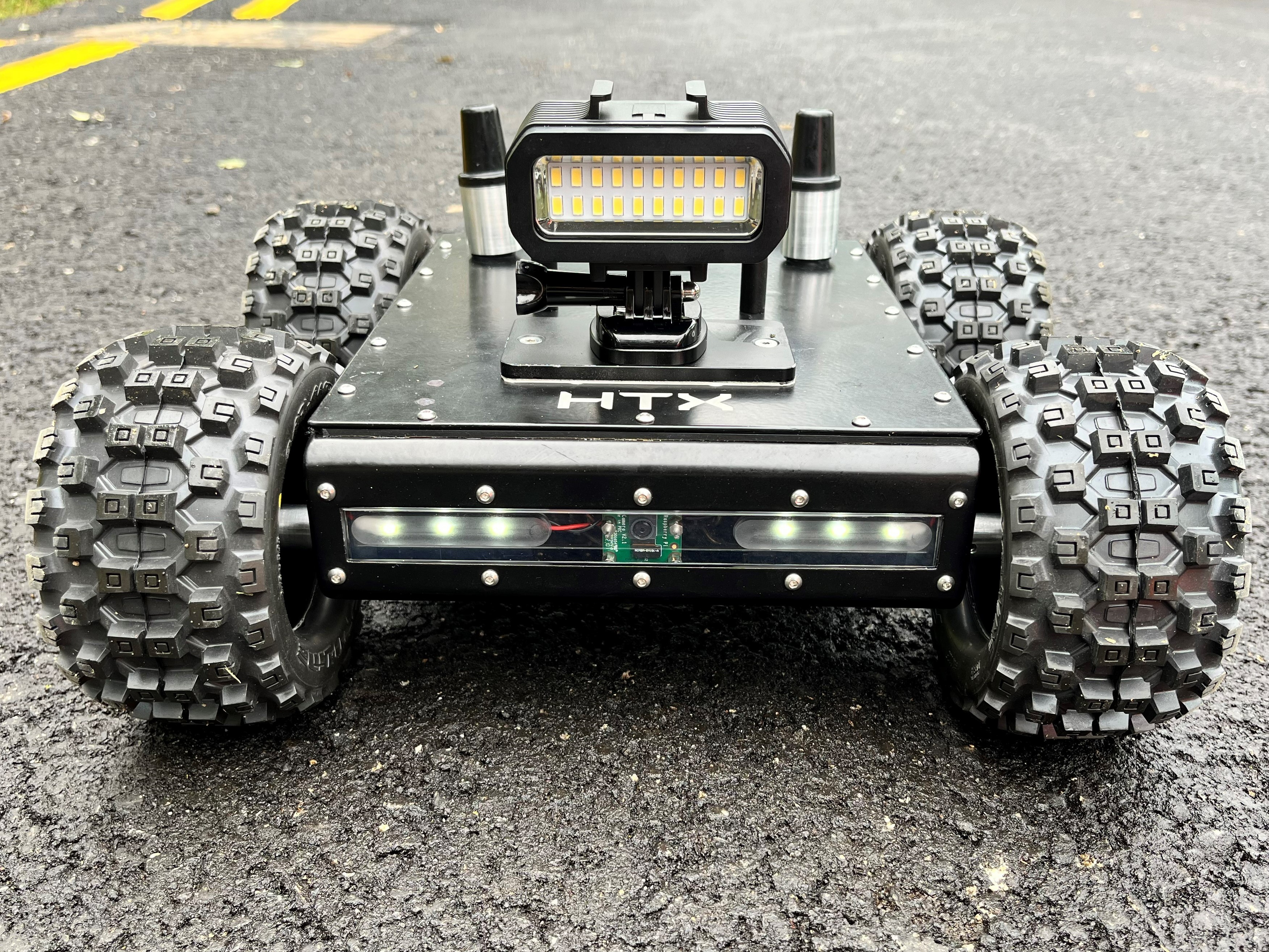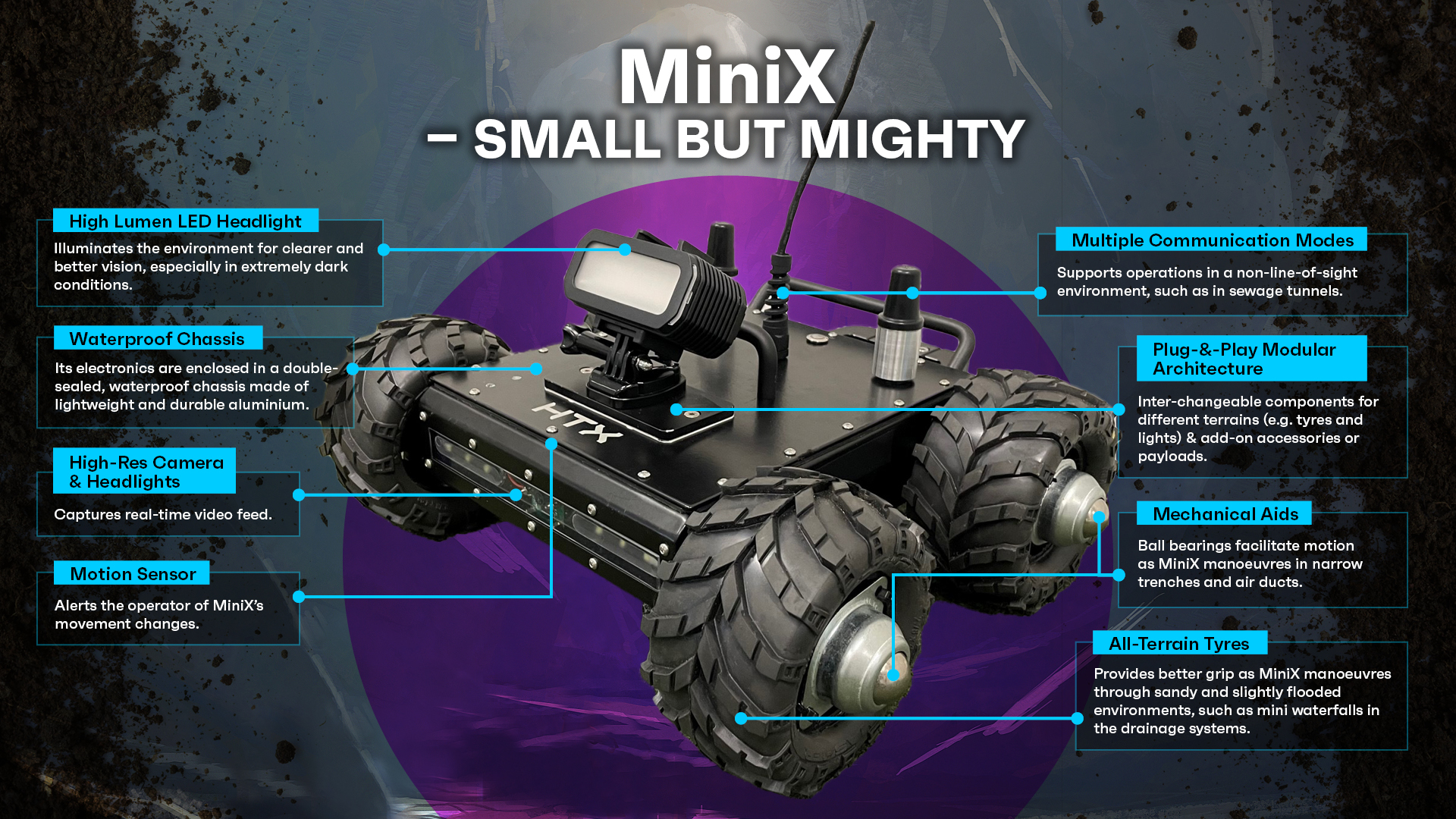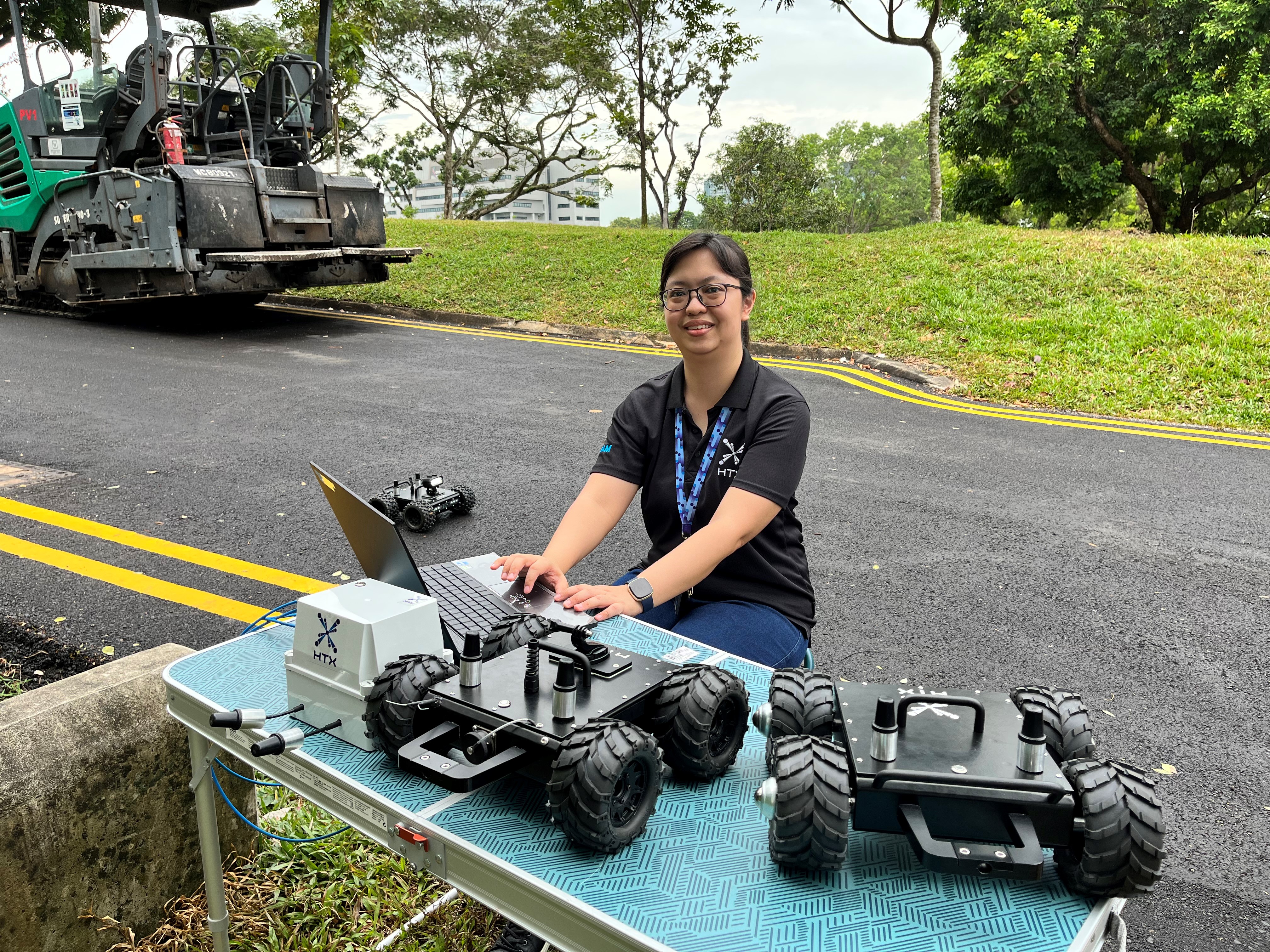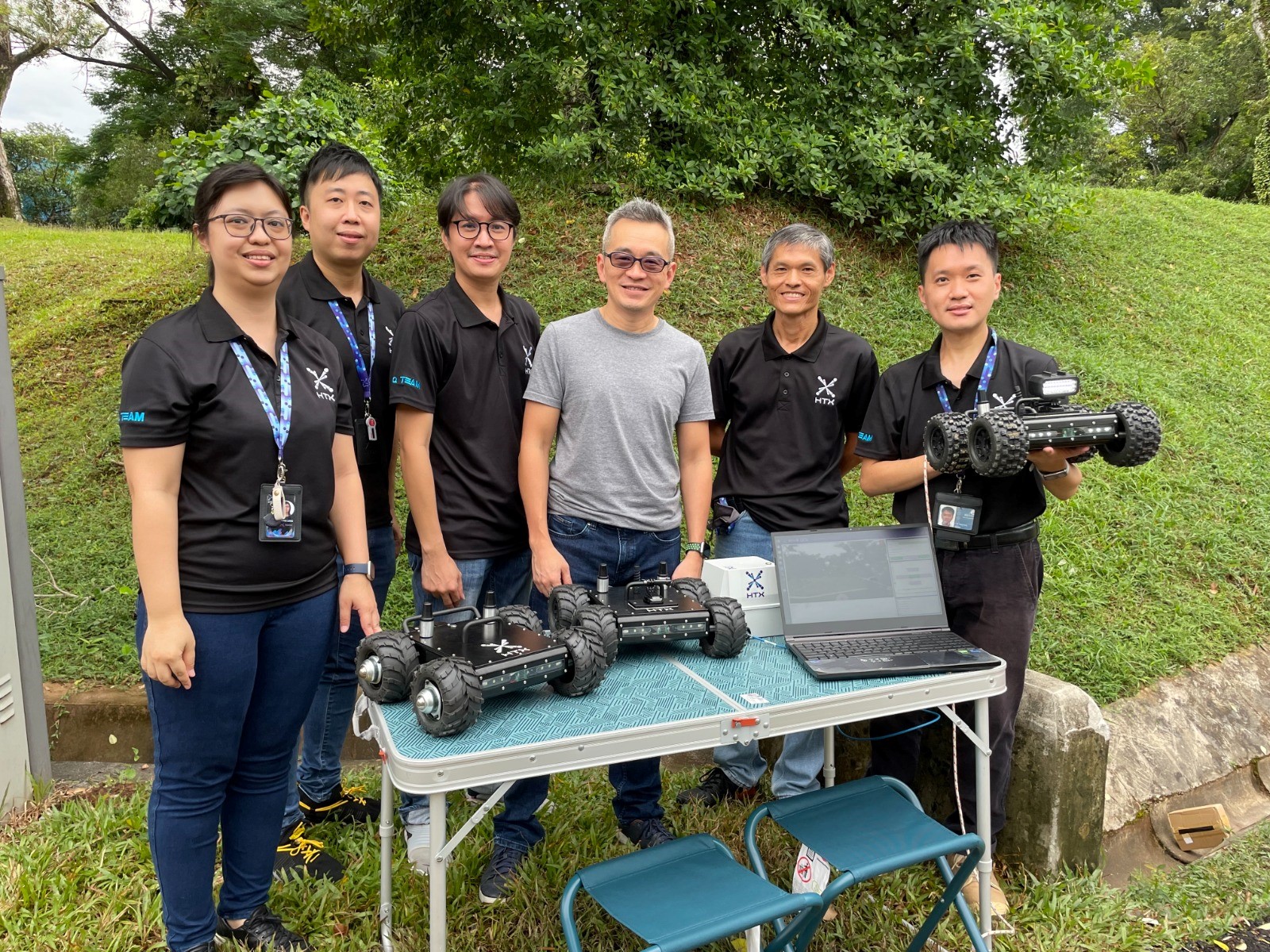
Scouring through the labyrinth of tunnels underground where dangerous items such as explosives may lie does not sound like the job scope of a typical engineer, but it’s all in a day’s work for those at HTX’s Q Team.
Q Team’s name was inspired by Q Branch, a fictional research and development division in James Bond movies. Q Team’s projects are equally high-tech, and keeping to the espionage genre, offers engineers the added adventure of walking alongside Home Team officers during missions.
Just as the elite officers from the Police Security Command (SecCom) of the Singapore Police Force (SPF) brave the darkness, dirt, and debris in the sewers to ensure the safety and security of attendees and VVIPs at high security events, so Q Team has experienced the same — all in the name of supporting SecCom with the robot MiniX.
Faster and safer operations for public safety
“Searching through underground facilities is a highly complex and risky affair,” said Dr. Ng Gee Wah, Director of Q Team, a Centre of Expertise at HTX. “In a dark and damp environment, the risk of SecCom officers falling and sustaining injuries is real, on top of the danger of actually encountering an explosive device or any other security threat items.”
Yet this environment is where MiniX thrives. With its A4-sized body and a weight of about 4.5kg, MiniX effortlessly manoeuvres through tunnels that would be difficult for SecCom officers to reach. It is waterproof, equipped with a camera to scan the environment, and can send visual information to a portable Ground Control System (GCS) on the surface.
“The deployment of MiniX will augment the way SecCom conducts surveillance of underground facilities and tunnels with increased safety and enhanced efficiency,” Gee Wah added.
Melvin Lim, Deputy Director, Q2, Q Team, and MiniX project lead, shared that this is because SecCom officers can control the robot from the safety of the surface and only enter tunnels if necessary.
They can also work faster. Where it takes more time for officers to do pre-checks (including donning personal protective equipment, safety brief) and physically performing the checks, MiniX can do the job in just 20 minutes.
MiniX for every terrain

But what really sets MiniX apart from existing robots on the market is that it is extremely customisable. This is credit to the extensive field work done by Melvin and his fellow Q Team engineers.
“Our work cannot be done just sitting in the office,” explained Lum Sam Heng, Q Team Engineer who worked on MiniX. “We have to go into the field to hear from the operations teams, understand the situation and see how our product is being used, so we can innovate."
Case in point: Only by wading through drains and various tunnels did the Q Team know what unique features MiniX needed.
“We were in a huge tunnel with thick mud when we saw the MiniX tyres skid. Now we have tyres for muddy terrain and tyres for dry indoor conditions. They would be provided as accessories for the operations user to choose from,” Melvin said.
Other features include allowing users to select from multiple modes of communication to control MiniX depending on the operating environment. An encrypted Wi-Fi channel is suitable for longer tunnels, and in areas with signal interference, it is possible to use a wired connection between the MiniX and the GCS.
In addition, useful gadgets such as LED lights, a second camera or even a cell phone can be easily attached to MiniX using standard camera mounts — all in all, ensuring that the robot is as versatile as possible and able to navigate through different environments.
 HTX Engineer Lau Yan Ling working on the Ground Control System (Photo: HTX/ Michelle Lim)
HTX Engineer Lau Yan Ling working on the Ground Control System (Photo: HTX/ Michelle Lim)
The Q Team value add
Development of these features has been fast. MiniX was only conceptualised in November 2020. The first prototype was completed within three months, and today MiniX is on the cusp of initial operational capability, where it will support SecCom officers in the field.
Melvin explained that such rapid progress is possible because of Q Team's versatile approach. Technology is either developed in-house or purchased and customised to meet user needs. There is also an emphasis on finding simple and straightforward solutions.
For example, in one trial the team had difficulty controlling MiniX’s movement through a narrow indoor trench. Because there was little space on either side of the trench, the robot climbed up the side wall and overturned occasionally. To solve this, Q Team simply used cable ties to attach ball bearings onto each wheel allowing it to glide smoothly along the trench walls.
For Melvin, this solution is an example of how engineers need to be flexible and creative and when supporting organisations with missions as diverse as Home Team. It is arguably these qualities that will support future MiniX developments, such as connecting multiple MiniX robots in a mesh network to cover wider terrain and developing semi-autonomous and autonomous MiniX versions.
“MiniX is testament to the agility, innovativeness, and passion that Q Team engineers have,” Gee Wah said. “We are proud to do our part in public safety and look forward to seeing MiniX unleash its power as a force multiplier for Home Team’s operations.”
 (From left to right) Q Team’s Lau Yan Ling, Derek Tan, Melvin Lim, Dr. Ng Gee Wah, and Lum Sam Heng, with HTX Chief Executive Chan Tsan (in grey). (Photo: HTX/ Rachel Tan)
(From left to right) Q Team’s Lau Yan Ling, Derek Tan, Melvin Lim, Dr. Ng Gee Wah, and Lum Sam Heng, with HTX Chief Executive Chan Tsan (in grey). (Photo: HTX/ Rachel Tan)
The MiniX 2, the second generation version of the MiniX, won the 2024 Home Team InnovA Project Commendation award.

